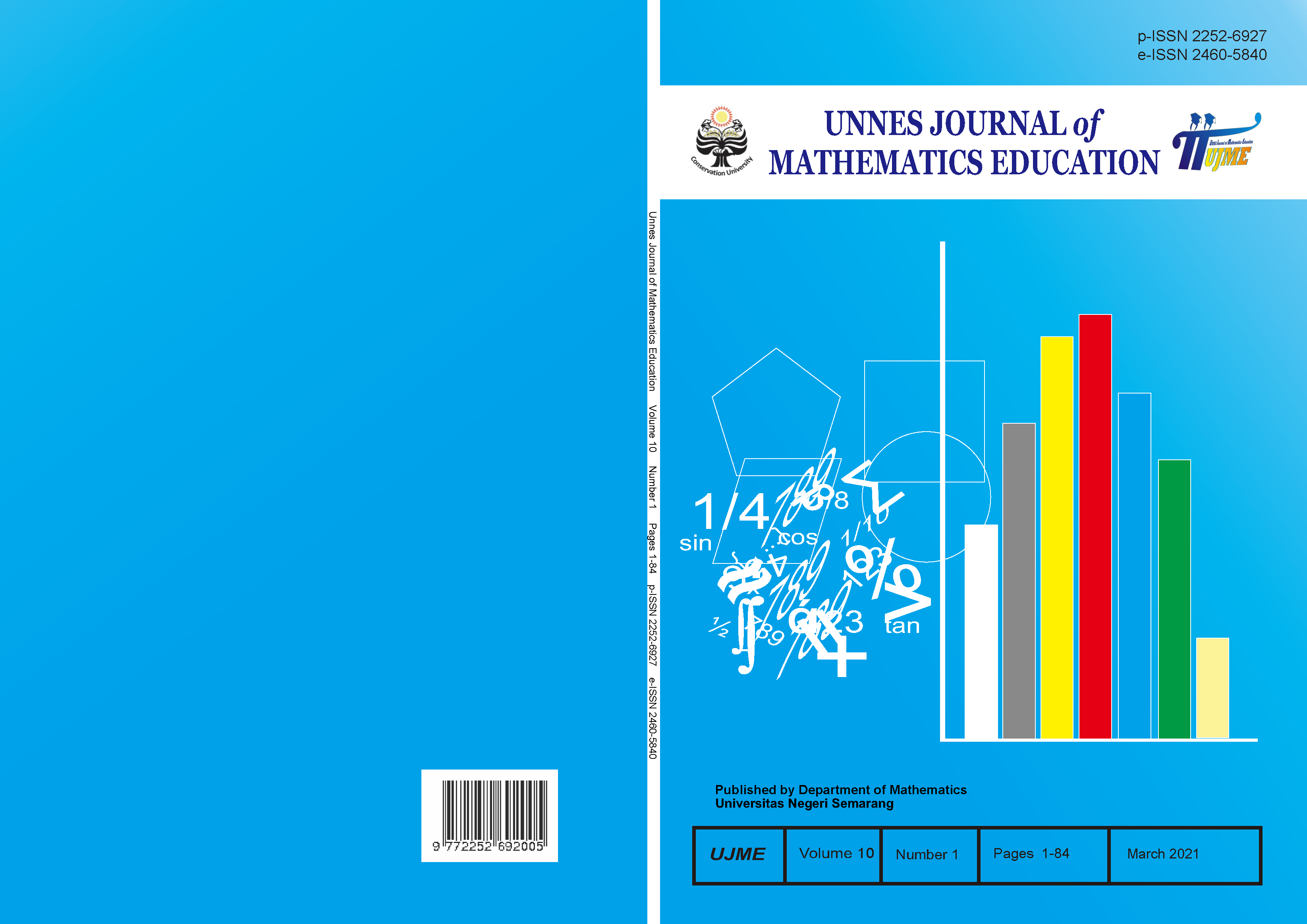The mathematical creative thinking ability of students viewed from learning motivation by using Treffinger learning model
##plugins.themes.academic_pro.article.main##
Abstract
The purpose of this study were to (1) know the achievement of the guidance to learn the skills of mathematical creative thinking students in Treffinger learning, (2) know the increase of students ' mathematical creative thinking skills in Treffinger learning, and (3) describe students' mathematical creative thinking skills for each category of learning motivation in Treffinger learning. This research method is a mixed methods design with sequential explanatory. The population in the study were all students of class VII Junior High School 3 Semarang Year 2019/2020, and sampling was conducted by random sampling selected to be sampled is a class VII-H. The subject of research conducted by purposive sampling technique. Subjects consisted of 6 students. Subjects were interviewed by the results of tests of creative mathematical thinking skills and student motivation. The results showed that (1) students' mathematical creative thinking abilities in Treffinger learning achieve mastery learning. (2) There is an increase in students' mathematical creative thinking skills in Treffinger learning. Increased mathematical creative thinking skills are medium. (3) Subject to high learning motivation can meet the indicators flexibility, fluency, and novelty. Subject to being able to meet the learning motivation fluency and novelty or just fluency. Subjects with low learning motivation are only able to meet one indicator fluency.
##plugins.themes.academic_pro.article.details##
References
Eftafiyana, S., Nurjanah, S.A., Armania, M., Sugandi, A.I. & Fitriani, N. (2018). Relationship Between Creative Thinking Ability Mathematical And Smp The Student Motivation Approach Using Creative Problem Solving. Journal of Theory and Mathematical Research (THEOREM) .2 (2): 85-92.
Ermistri, A.I. (2017). The relationship between learning motivation with Creative Thinking Mathematically the Students in Class VII. Journal of Education and Learning. 6 (6): 1-9.
Isaksen, S.G., Dorval, K.B., & Treffinger, D.J. (2011). Creative Approaches to Problem Solving: A Framework for Innovation and Change, 3rd Edition, SAGE Publications.
Isnaini, M., Duskri, & Said, M. (2016). Efforts to Enhance Creativity and Mathematical Problem Solving Ability Junior High School Students with Learning Model Treffinger. Didactic Journal Matematika.3 (1): 15-25.
Kemendikbud. (2013). Kurikukum 2013. Jakarta: Ministry of Education and Culture.
Maharani, Restie Kartika. (2018). Influence Learning Model Treffinger Berpikirkreatif Subject Mathematics Ability To Build Space Matter. JPGSD.6 (4): 506-515.
Munandar, U. (2014). Development of the Gifted Child Creativity. Jakarta: Rineka Cipta.
Ningsih, P. R. (2012). Application of the method realistic mathematics education (RME) on the subject of comparative worth and turn the value in the Class VII E Junior Ipiems Surabaya. Gamatika, 3 (2).
OECD (2015). Program for International Student Assessment (PISA). Accessed from http://www.oecd.org/pisa/PISA-2015
Puspita, M. (2018). Influence Learning Model Treffinger For Basic Materials Sound Of Motivation And Creative Thinking Ability. Thesis. Lampung. FTK UIN Raden Intan.
Sardiman. (2014). Interaction of Teaching and Learning and Motivation. Jakarta: RajaGrafindoPersada.
Slameto. (2010). Belajar and the factors that influence it. Jakarta: Rineka Reserved.
Sudjana. (2005). Metode Statistika. Bandung: PT Tarsito Bandung.
Sugiyono. (2016). Methods of Education's research. Bandung: Alfabeta.
Suherman, et al. (2003). Math Learning Strategies Kontem-porer. Bandung: JICA UPI.
